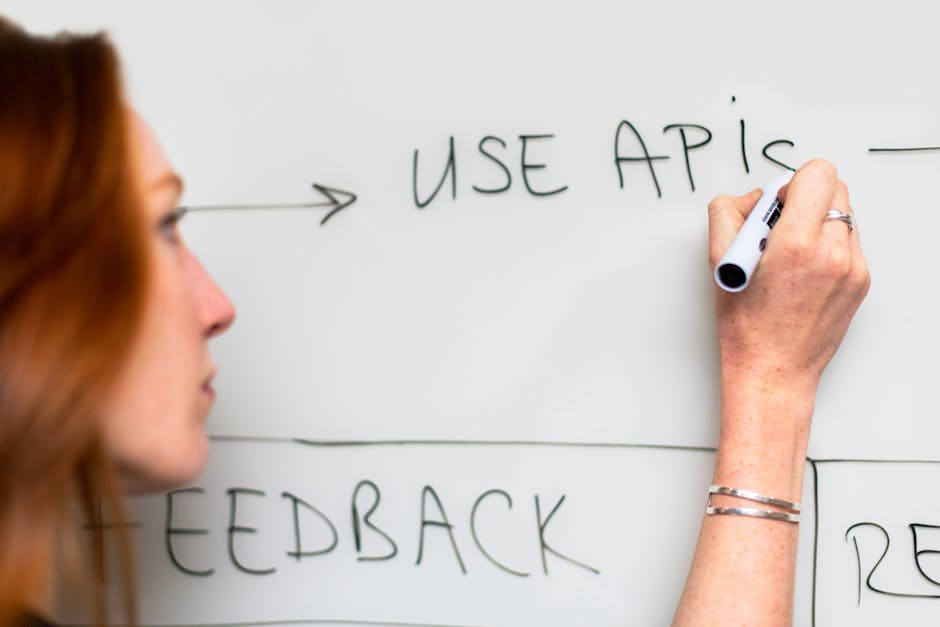Integrating APIS Into Your Web Applications
You’re about to supercharge your web app with APIs, but don’t get blindsided by the tech jargon. First, you need to grasp the fundamentals: architecture, data serialisation, and security measures. Then, vet your API partner like you would a roommate – cheque their rep, scalability, and support team. When integrating, choose between API wrappers or a custom integration layer, depending on your project’s needs. And don’t even get me started on error handling and security – you gotta be on top of those game-changers. Now, buckle up and get ready to take your app to the next level… if you’re ready for it.
Key Takeaways
• Choose the right API partner by researching their reputation, security protocols, and scalability to ensure a smooth integration.• Select an API integration method (API Wrappers or Integration Layer) based on the project’s specific needs and constraints.• Implement robust error logging to track and analyse errors, and develop failover strategies to minimise downtime.• Ensure API security by implementing OAuth strategies, encrypting sensitive data, and regularly updating and patching the API.• Consider data serialisation formats (JSON or XML) and their implications on API architecture and scalability.
Understanding API Fundamentals

As you venture into the world of web applications, you’ll quickly realise that APIs are the unsung heroes that make the magic happen, allowing different systems to communicate and exchange data in a language they can all understand. Think of APIs as the ultimate middlemen, facilitating seamless interactions between disparate systems.
But, before you start building your API empire, you must grasp the fundamentals.
API Architecture refers to the underlying structure and organisation of your API, including the protocols, data formats, and security measures. Think of it as the blueprint for your API’s functionality. A well-designed API architecture guarantees scalability, flexibility, and maintainability – the holy trinity of API development.
Data Serialisation is the process of converting data into a format that can be easily transmitted and reconstructed at the receiving end. It’s like packing a suitcase for a trip; you need to make sure everything fits neatly and can be easily unpacked at the destination.
JSON (JavaScript Object Notation) and XML (Extensible Mark-up Language) are two popular data serialisation formats used in APIs. JSON is like the cool, laid-back cousin who’s easy to work with, while XML is more like the strict, by-the-book aunt who’s a bit more high-maintenance.
Choosing the Right API Partner

When you’re on the hunt for an API partner, it’s like online dating – you need to find someone who shares your values, is compatible with your tech stack, and won’t drive you crazy with unnecessary drama. You’re not looking for a casual fling; you’re searching for a long-term commitment. So, take your time, and don’t rush into anything.
To avoid a messy break-up, you need to vet your potential partner thoroughly. This is where partner vetting comes in. Verify that you’re researching the API provider’s reputation, security protocols, and scalability. You want to confirm they can handle your traffic and won’t crash under pressure.
Cheque their API roadmap to see if it alines with your business goals. You don’t want to partner with someone who’s stuck in the Stone Age while you’re trying to innovate.
Ask the tough questions: What’s their uptime and response time? Do they have a dedicated support team? How do they handle errors and bugs? You want a partner who’s proactive, not reactive.
Don’t be afraid to ask for case studies or references. A reliable API partner will be transparent and willing to provide you with the information you need.
API Integration Methods Explained

You’ve finally found your perfect API partner, and now it’s time to get down to business – literally, by integrating their API into your web application.
The excitement’s real, but let’s not get ahead of ourselves. Before you start imagining the endless possibilities, you need to figure out how to make this integration magic happen.
There are two primary methods to integrate an API into your web application: using API Wrappers or building an Integration Layer.
API Wrappers are pre-built libraries that simplify the integration process, making it easier to interact with the API. It’s like having a personal assistant who speaks API-ish – in other words, a go-between that facilitates communication.
An Integration Layer is a custom-built solution that acts as an intermediary between your app and the API. This approach gives you more control and flexibility, but it requires more effort and development time. Think of it as building a custom bridge between your app and the API.
Both methods have their pros and cons, and the choice ultimately depends on your project’s specific needs and constraints.
Handling API Errors and Exceptions

API errors and exceptions are the unwelcome party crashers that’ll turn your integration dreams into a nightmare, and it’s high time you learnt how to handle them before they ruin the whole API bash.
Think of it this way: you’re the host, and your API is the party. You’ve got the music, the food, and the guests – but then, suddenly, the DJ’s equipment fails, the catering truck breaks down, and the fire alarm goes off. You get the idea. It’s chaos, and it’s up to you to restore order.
So, what’s the plan?
First, you need to anticipate the unexpected. Implement robust error logging to track and analyse errors, so you can identify patterns and troubleshoot issues before they escalate. This will help you pinpoint the problem and fix it before it’s too late.
Next, develop failover strategies to minimise downtime and maintain business continuity. This could mean setting up redundant systems, load balancing, or even partnering with a backup API provider. The key is to be prepared for the worst-case scenario, so you can respond quickly and efficiently when disaster strikes.
Best Practises for API Security

Security breaches are the ultimate party poopers, and it’s time to lock them out of your API bash for good. You’ve worked hard to build a seamless API experience, and the last thing you need is some sneaky hacker crashing the party.
Start by implementing OAuth strategies that’ll make it tough for unauthorised users to get in. Use tokens, not passwords, to authenticate requests. And, please, for the luv of all things digital, don’t hardcode your credentials! You’re basically giving hackers a golden ticket to your API.
Next, encrypt those sensitive data transmissions with encryption techniques like SSL/TLS or HTTPS. You don’t want your users’ info floating around in plain text, do you? Think of encryption as the API equivalent of a confidential whisper – only the intended recipient can hear the conversation.
Regularly update and patch your API to prevent exploitation of known vulnerabilities. And, when in doubt, validate, validate, validate! Verify user input, sanitise your data, and keep those error messages cryptic (no hints for hackers, please).
Conclusion
You’ve successfully navigated the world of API integration.
By 2025, 85% of companies will have a hybrid or multi-cloud strategy, relying heavily on APIs.
Now that you’re equipped with the know-how, go forth and connect those APIs like a pro!
Remember, a well-oiled API machine is a beautiful thing – and you’re the conductor.
Contact us to discuss our services now!

